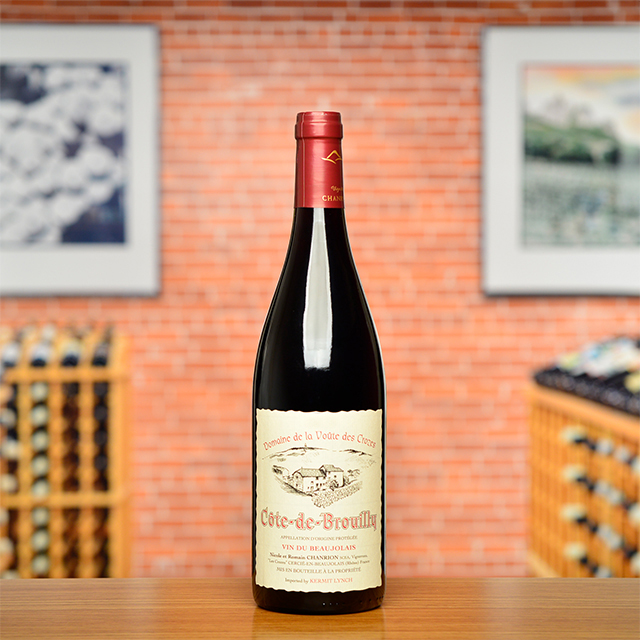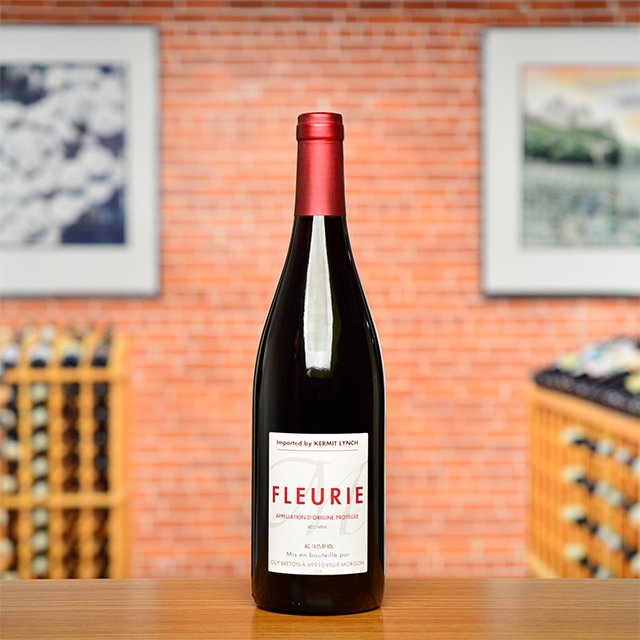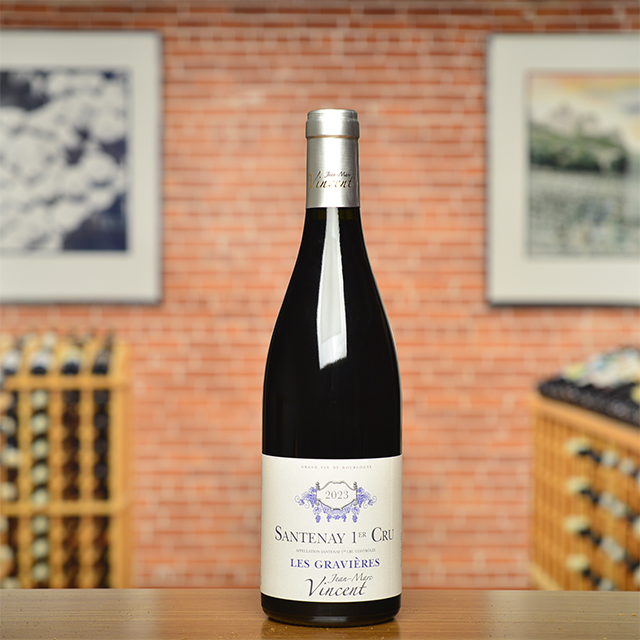Notify me
2018 Brouilly
Alex Foillard
Alex Foillard epitomizes the new generation of talent coming of age in the Beaujolais. Growing up in the Foillard household, he had privileged access to the brightest minds of natural wine, but that did not prevent him from exhibiting some ambition of his own. In order to really spread his wings, he purchased his own vineyards, including a one-hectare plot of fifty-year-old vines in Brouilly, a cru novel to the Foillard cellars. You might detect a slight southern accent in this release—a generous dash of plump, sun-ripened fruit enveloping its granite core—along with the deluxe silkiness that characterizes all Foillard bottlings.
—Anthony Lynch
| Wine Type: | red |
| Vintage: | 2018 |
| Bottle Size: | 750mL |
| Blend: | Gamay |
| Appellation: | Brouilly |
| Country: | France |
| Region: | Beaujolais |
| Producer: | Alex Foillard |
| Vineyard: | 1 ha, 50 years old |
| Soil: | Granite, under a thin layer of soil |
| Farming: | Organic (practicing) |
| Alcohol: | 13% |
More from this Producer or Region

2024 Beaujolais
France | Beaujolais
Tangy, thirst-quenching Gamay from a family that has been making Beaujolais for over 500 years.

2023 Chénas “Les Blémonts”
France | Beaujolais
Structured yet full of energy, with notes of blueberry, spice, and other things nice.

2021 Côte de Brouilly
France | Beaujolais
Alex Foillard fashions a Côte-de-Brouilly that strikes a deeper register, saturating the senses with tooth-staining fruit.

2024 Côte-de-Brouilly
France | Beaujolais
Loads of fun—juicy, round, structured, yet always elegant and focused. A classic favorite.

2024 Beaujolais-Villages
France | Beaujolais
December Club Gourmand ~ This drinks like a Gamay infusion with lovely hints of potpourri, spice, and fresh grapes.

2024 Morgon “La Roche Pilée”
France | Beaujolais
This is textbook Morgon: bright, floral, and spicy, recalling juicy peach and sour cherry.

2024 Fleurie
France | Beaujolais
Guy Breton’s Fleurie is delicate, with buffed tannins and juicy fruit; it will leave your thirst slaked and your heart feeling light.

2022 Régnié
France | Beaujolais
Savor it while you can, because your glass will be empty before you know it, leaving you only with the spicy, mineral-laden aftertaste of a bottle that went down way too easily.

2021 Brouilly
France | Beaujolais
A generous dash of plump, sun-ripened fruit enveloping a granite core.

2022 Côte de Brouilly
France | Beaujolais
A relatively new addition to Guy Breton’s Beaujolais lineup, this exuberant Côte de Brouilly is flat-out delicious.
About The Producer
Alex Foillard
The son of “Gang of Four” producer Jean Foillard, Alex had early exposure to the principles of sustainable farming and low-intervention winemaking. Alex’s involvement in the family business began at a young age, helping his father pick grapes during harvest. After studying agriculture at the Lycée Agricole in Montpellier and earning a degree in viticulture and enology in Beaune, Alex purchased his own vineyards, a hectare each in the crus of Brouilly and Côte-de-Brouilly. He works his vines according to organic principles and uses tried-and-true techniques to craft his wines: whole-cluster fermentation with natural yeasts, no fining or filtration, and no additives save for a minute sulfur dose at bottling. As a result, his cuvées have a seductive aromatic component, a silky texture, and a downright deliciousness that is unmistakably Foillard.
About The Region
Beaujolais

After years of the region’s reputation being co-opted by mass-produced Beaujolais Nouveau and the prevalence of industrial farming, the fortunes of vignerons from the Beaujolais have been on the rise in the past couple of decades. Much of this change is due to Jules Chauvet, a prominent Beaujolais producer who Kermit worked with in the 1980s and arguably the father of the natural wine movement, who advocated not using herbicides or pesticides in vineyards, not chaptalizing, fermenting with ambient yeasts, and vinifying without SO2. Chief among Chauvet’s followers was Marcel Lapierre and his three friends, Jean Foillard, Guy Breton, and Jean-Paul Thévenet—a group of Morgon producers who Kermit dubbed “the Gang of Four.” The espousal of Chauvet’s methods led to a dramatic change in quality of wines from Beaujolais and with that an increased interest and appreciation for the AOC crus, Villages, and regular Beaujolais bottlings.
The crus of Beaujolais are interpreted through the Gamay grape and each illuminate the variety of great terroirs available in the region. Distinguishing itself from the clay and limestone of Burgundy, Beaujolais soils are predominantly decomposed granite, with pockets of blue volcanic rock. The primary vinification method is carbonic maceration, where grapes are not crushed, but instead whole clusters are placed in a tank, thus allowing fermentation to take place inside each grape berry.
Much like the easy-going and friendly nature of many Beaujolais vignerons, the wines too have a lively and easy-drinking spirit. They are versatile at table but make particularly good matches with the local pork sausages and charcuterie. Though often considered a wine that must be drunk young, many of the top crus offer great aging potential.
More from Beaujolais or France
2023 Chénas “Les Blémonts”
Domaine Thillardon France | Beaujolais
2022 Côte de Brouilly
Guy Breton France | Beaujolais
2024 Côte de Brouilly HALF BOTTLE
Château Thivin France | Beaujolais
2024 Morgon “Vieilles Vignes”
Guy Breton France | Beaujolais
2024 Côte-de-Brouilly
Nicole Chanrion France | Beaujolais
2024 Beaujolais-Villages
Alex Foillard France | Beaujolais
2025 Beaujolais Nouveau
La Sœur Cadette France | Beaujolais
2022 Régnié
Guy Breton France | Beaujolais
2023 Chénas “Chassignol”
Domaine Thillardon France | Beaujolais
2021 Brouilly
Alex Foillard France | Beaujolais
2024 Côte de Brouilly MAGNUM
Château Thivin France | Beaujolais
2024 Morgon “Vieilles Vignes”
Jean-Paul et Charly Thévenet France | Beaujolais
2023 Chénas “Les Blémonts”
Domaine Thillardon France | Beaujolais
2022 Côte de Brouilly
Guy Breton France | Beaujolais
2024 Côte de Brouilly HALF BOTTLE
Château Thivin France | Beaujolais
2024 Morgon “Vieilles Vignes”
Guy Breton France | Beaujolais
2024 Côte-de-Brouilly
Nicole Chanrion France | Beaujolais
2024 Beaujolais-Villages
Alex Foillard France | Beaujolais
2025 Beaujolais Nouveau
La Sœur Cadette France | Beaujolais
2022 Régnié
Guy Breton France | Beaujolais
2023 Chénas “Chassignol”
Domaine Thillardon France | Beaujolais
2021 Brouilly
Alex Foillard France | Beaujolais
2024 Côte de Brouilly MAGNUM
Château Thivin France | Beaujolais
2024 Morgon “Vieilles Vignes”
Jean-Paul et Charly Thévenet France | Beaujolais
Kermit once said...

Kermit once said...
For the wines that I buy I insist that the winemaker leave them whole, intact. I go into the cellars now and select specific barrels or cuvées, and I request that they be bottled without stripping them with filters or other devices. This means that many of our wines will arrive with a smudge of sediment and will throw a more important deposit as time goes by, It also means the wine will taste better.




















